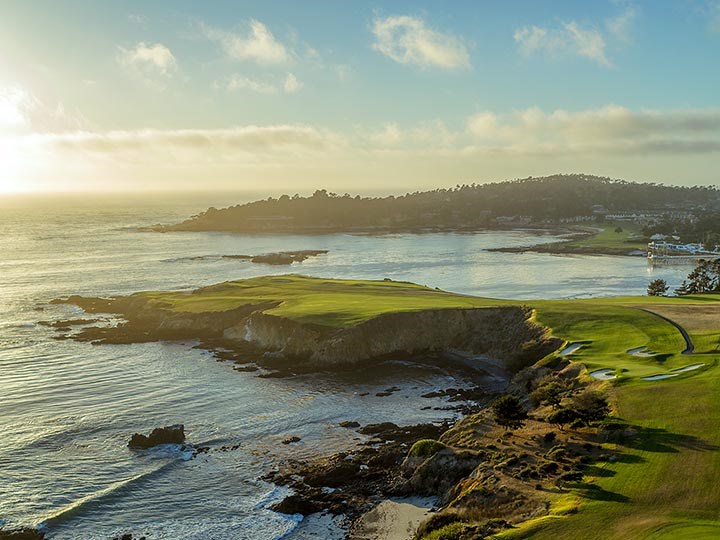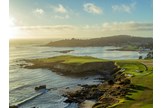Where the US Open will be won and lost
Last updated:
Eric Lippert, head PGA pro at Pebble, reveals the task facing the world’s best players on America’s most iconic course.
Where will the tournament be won or lost?
The first few holes are the ones to make a score on. There’s a couple of short par 4s in this stretch, and then two short-ish par 3s, so there’s opportunities to score well. The 8th tee box is probably where the tournament begins. The uphill drive has to be positioned accurately and well away from the cliff to the right, and then the second is played to a tricky green. The most fearsome holes on the course come next – No.9 and No.10. Come away with a par on these, and you’re in good shape against the field.
Is the back nine fraught with danger as well?
Fourteen is a troublesome, almost fearsome, par 5, and many a player has left the green with a seven or eight on their card. Indeed, your Sir Nick Faldo once famously climbed a tree to play his shot to avoid a horror score. Par here will feel good. Then there’s 17, where there’s been some legendary and historic shots, and the famous 18th with its risk and reward aspect. Over the last couple of years, we’ve re-worked the 17th green, and found a little bit more space. During Graeme McDowell’s 2010 Open win, less than 20 per cent of players found the green!

Which of the 14 clubs in the bag is the key to scoring well?
As at any US Open the driver is very important, and here at Pebble accuracy is critical. The fairways are so much narrower than players are used to – 30 yards in some cases. We don’t have a lot of trees in the way, but Pebble has the smallest greens on the PGA Tour. So, while iron play is important, if you can’t control your ball from the rough that’s going to really hurt you.
Which of the greens are the hardest to read?
The 18th can be tricky, just because the Pacific is right next to it. The 6th can be troublesome. Everyone says the greens slope to the ocean but guess what? At 6 and 7 you’re surrounded on three sides by ocean! The 8th is just a hard green to putt on because of the slope and the size of it. No.11 has a traditional, classic front-to-back slope so they’ll need to be “under the hole” there. But one green that will be interesting to watch is 13. We’ve created a new pin area on the back right which was unusable in the past. While it’s not overly tricky, it’s a pin position that players aren’t overly familiar with from past experiences. The “newness’ of that spot will be a challenge for them.
What kind of strategies will be employed?
When you start off, you need to attack. Then you gotta hang on and be patient in the middle, and be comfortable with that 60-degree wedge. The size of the greens don’t lend themselves to running shots. The skill is determining how juicy the rough is because it grows thick. Even the top pros aren’t comfortable swinging hard on a short shot


